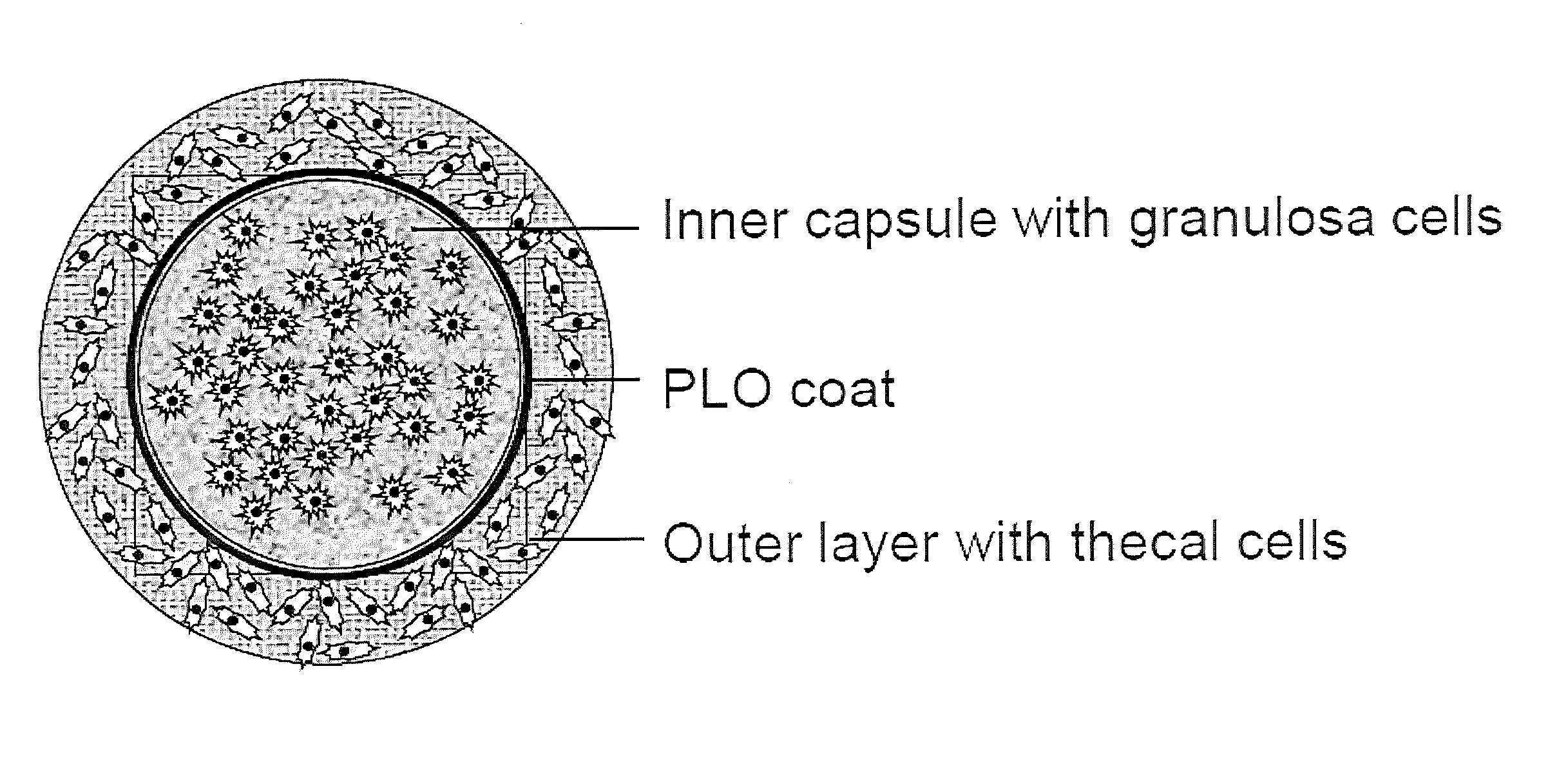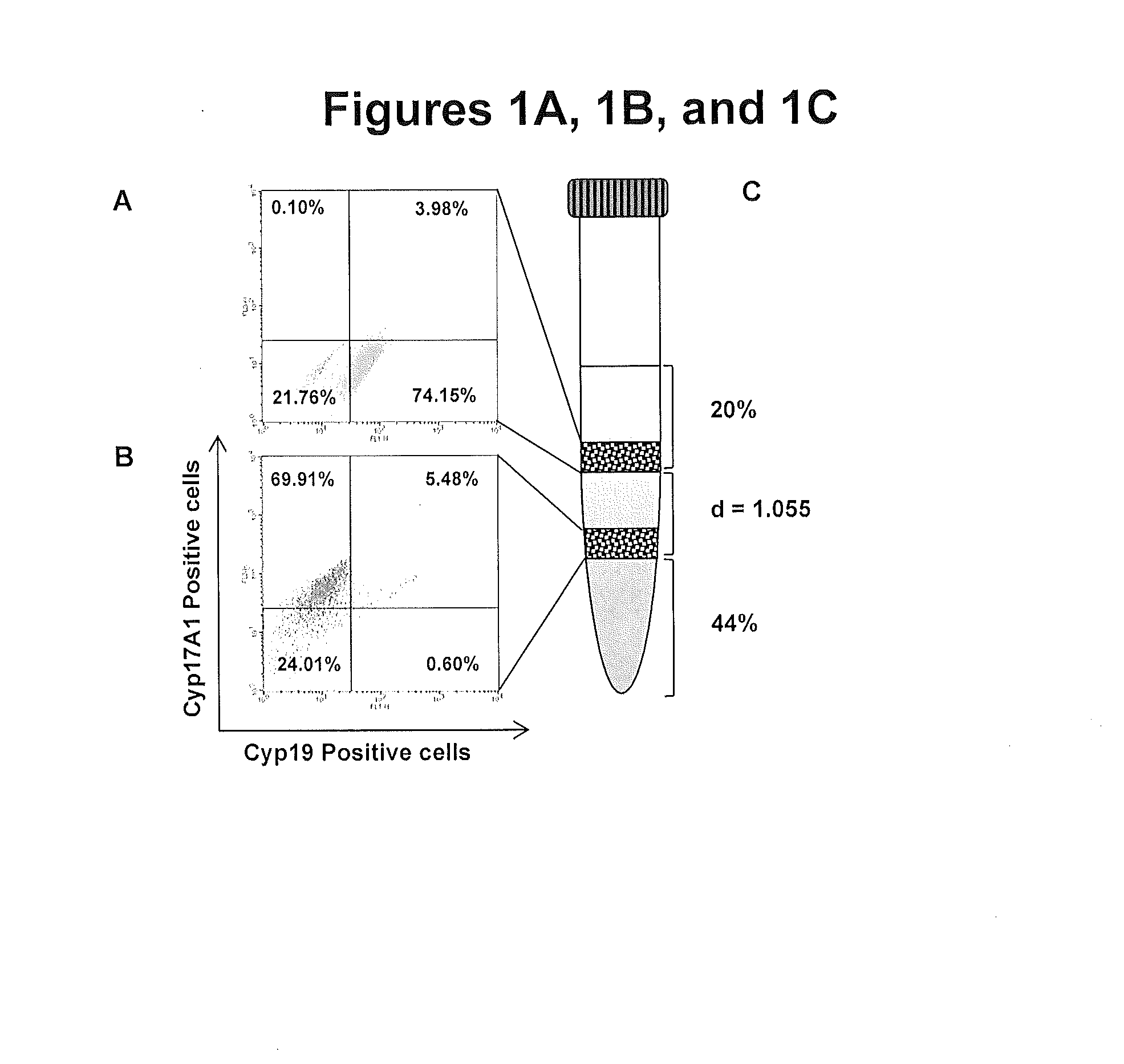Encapsulated cells for hormone replacement therapy
- Summary
- Abstract
- Description
- Claims
- Application Information
AI Technical Summary
Benefits of technology
Problems solved by technology
Method used
Image
Examples
example 1
Isolation of Rat Ovaries
[0035]As schematically illustrated in FIG. 1, postnatal day 21 Fischer 344 rats were injected with 1.5 mg / 0.2 ml of 17β-estradiol (E2) dissolved in sesame oil, subcutaneously for three consecutive days. The rats were euthanized 24 h after the last injection, ovaries were excised and endocrine cells were isolated as described in Example 2:
example 2
Cell Isolation and Purification
[0036]The endocrine cells were isolated from ovaries of E2-primed immature rats according to Li and Hearn (J. Biochem. Biophys. Methods 45, 169-181 (2000). Ovaries collected in ice cold medium 199 (M199) containing HEPES (25 mM), 1 mg / ml bovine serum albumin (BSA), L-glutamine (2 mM), penicillin (10,000 IU / ml), streptomycin (10,000 μg / ml), and amphotericin B (25 μg / ml). After cleaning the extraneous tissues, the ovaries were washed twice with ice cold M199 and then punctured gently with 27G syringe needles in order to release the loosely packed granulosa from the follicles; cells thus collected were kept on ice. The remaining ovaries were chopped into fine pieces of ˜0.25 mm2 and the cells released during this process were collected and kept on ice separately. The pieces of ovaries were then incubated with collagenase (2 mg / ml) and DNase (10 μg / ml) in M199 for 90 min with occasional mixing. The enzyme-digested pieces were dispersed using a Pasteur pipe...
example 3
Cells Analyzed Using Flow Cytometry
[0037]A fraction of the cells (5×106 cells / cell type) purified using the discontinuous percoll gradient was fixed in 3.7% formaldehyde for 15 minutes.
[0038]To verify the purity of the cell types isolated from the rat ovaries, the cells were stained with cell-specific markers and quantified by flow cytometry. Cells from different interphases (See FIG. 1C) were incubated with primary antibodies. Antibody for CYP19 (mouse anti-CYP19; Abbiotech; cat. 250549) and FITC-conjugated secondary antibody were used to detect the granulosa cells. Antibody for CYP17A1 (goat anti-CYP17A1; Santa Cruz Biotechnology; cat. sc-46085) and PerCP Cy5.5-conjugated donkey anti-goat IgG secondary antibody were used to detect the theca cells. Cells were incubated with the appropriate primary antibody for 1 h. Unbound antibodies were then washed off and the cells were incubated with the appropriate secondary antibody for 1 h. After washing off the unbound secondary antibodies,...
PUM
| Property | Measurement | Unit |
|---|---|---|
| Diameter | aaaaa | aaaaa |
| Diameter | aaaaa | aaaaa |
Abstract
Description
Claims
Application Information
 Login to View More
Login to View More - R&D
- Intellectual Property
- Life Sciences
- Materials
- Tech Scout
- Unparalleled Data Quality
- Higher Quality Content
- 60% Fewer Hallucinations
Browse by: Latest US Patents, China's latest patents, Technical Efficacy Thesaurus, Application Domain, Technology Topic, Popular Technical Reports.
© 2025 PatSnap. All rights reserved.Legal|Privacy policy|Modern Slavery Act Transparency Statement|Sitemap|About US| Contact US: help@patsnap.com



